Email marketing is a powerful tool for businesses. It helps them reach customers directly in their inbox.
Email marketing can be used to promote products, services, and events. It can also be used to build relationships with customers.
When done right, email marketing can be an effective way to connect with customers. It can help businesses grow and succeed in today’s digital world.
With that said, we have collected some important email marketing statistics for 2024. Let’s take a look…
2024 Email Marketing Stats
21.33% is the average open rate for emails across all industries.
Emails that include emojis have open rates of 28.26%, which is similar to the 26.42% open rate for emails without emojis.
40% of emails with subject lines containing “update”, “events”, “name of the month”, or “now” were opened, compared to an average open rate of 21.33%.
43.85 characters is the average length of a subject line in top performing emails.
Nearly half of all emails sent are marked as spam.

31% of marketers use email marketing.
Half of B2B marketers in the US say email marketing has the biggest impact on their multichannel strategy. It does better than social media (50%) and content marketing (26%).
18 billion dollars is the estimated email marketing revenue by 2027’s end.
Abandoned cart emails have a conversion rate that is three times higher compared to other types of automated emails.

85% of eCommerce marketers’ main goal with email is to increase brand awareness.
Generative AI for email creation is rated “effective” by 95% of marketers who use it, and 54% consider it “very effective.”
63.91% of welcome emails are opened.
Popular spam filters catch or lose 14.3% of all emails.
67% of B2B buyers and consumers create a separate junk email account to avoid unwanted emails due to feeling overwhelmed by the amount they receive.
The top challenges for marketers in email production are building (41%), designing (40%), and testing (39%).
2.96% is the average click-through rate for emails sent in North America, while the global average is 1.89%.
Personalization in email body can result in a 28.57% higher click-through rate, with 2.7% for tailored content compared to 2.1% without it.
95% of emails from Google reach inboxes, while Microsoft, Yahoo, and AOL have delivery rates of 91%, 81%, and 76% respectively.
The average email delivery rate stands at 85.7%.
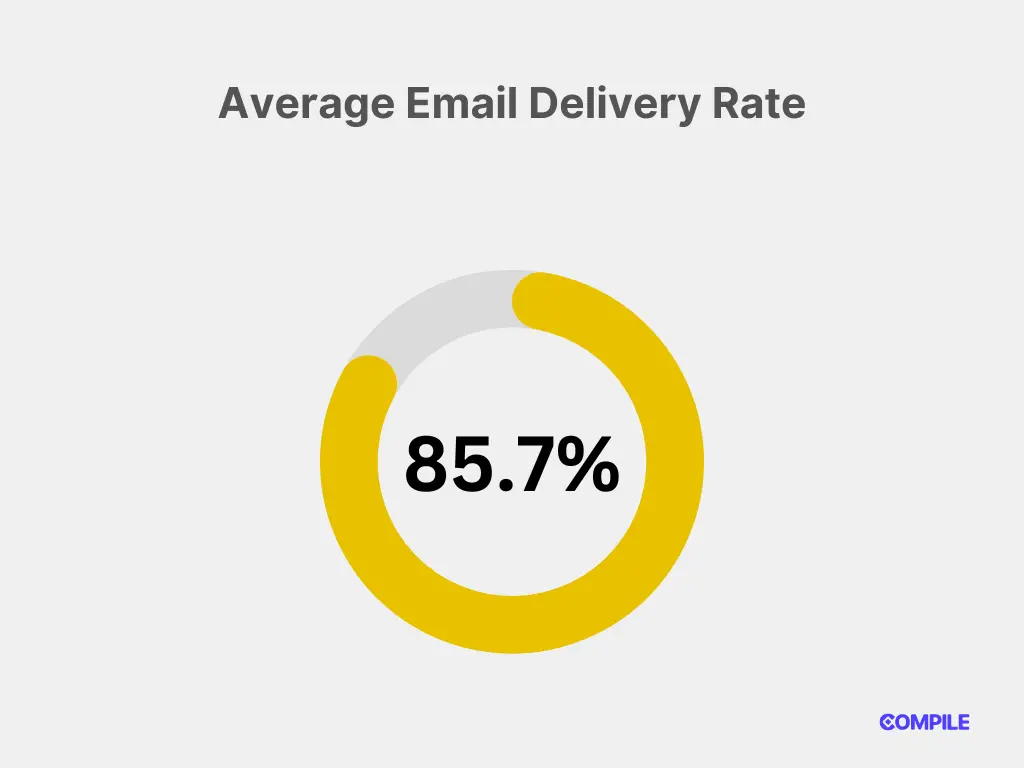
5.77%, 5.43%, and 4.42% were the click-through rates for organizations in Communications, Publishing, and Financial Services, respectively, which were higher than the average of 1.89%.
The iPhone default email app shows only the first 48 characters of a subject line, while the Gmail app displays just 37 characters.
49.89% is the open rate for cart abandonment email flows, which brings an average revenue of $3.58 per recipient, almost double the average revenue of $1.91 across all campaigns.
Gmail has surpassed 10 billion downloads on Google Play.
80% of people open welcome emails, leading to 4 times more opens and 10 times more clicks compared to other email types.
Within the first hour of sending, nearly 21% of all email campaigns are opened.
The click-through rate is highest at 3.44% when 1 email newsletter is sent per week, and it drops to 2.75% and 2.4% when 2 and 3 newsletters are sent per week, respectively, showing that lower email frequency correlates with higher click-through rates.
30.27% of image-based emails are opened, while only 21.9% of text-based emails are opened.
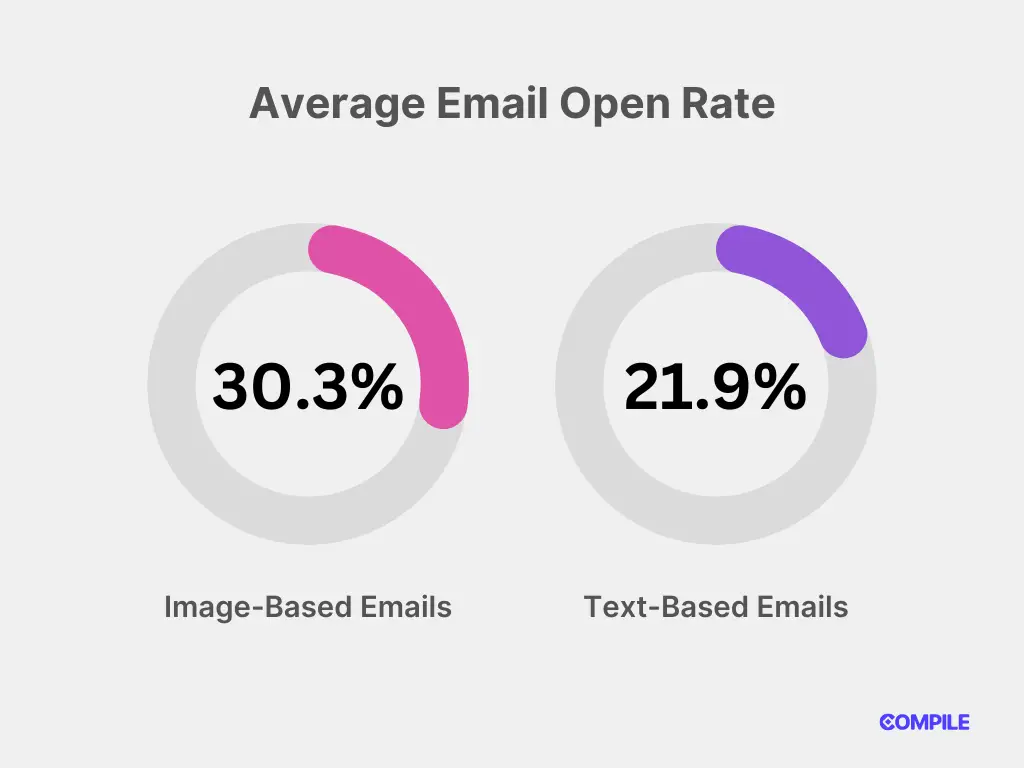
54% of consumers enjoy emails that mention a birthday or anniversary, and 53% like emails that share local or regional events and offers.
Send time optimization (STO) in email marketing campaigns leads to a 5% to 10% increase in opens and clicks.
Adding videos to emails can boost clickthrough rates by up to 65%.
1.86 is the minimum number of email accounts an average user has.
Emails that include images see nearly a 10% increase in open rates.
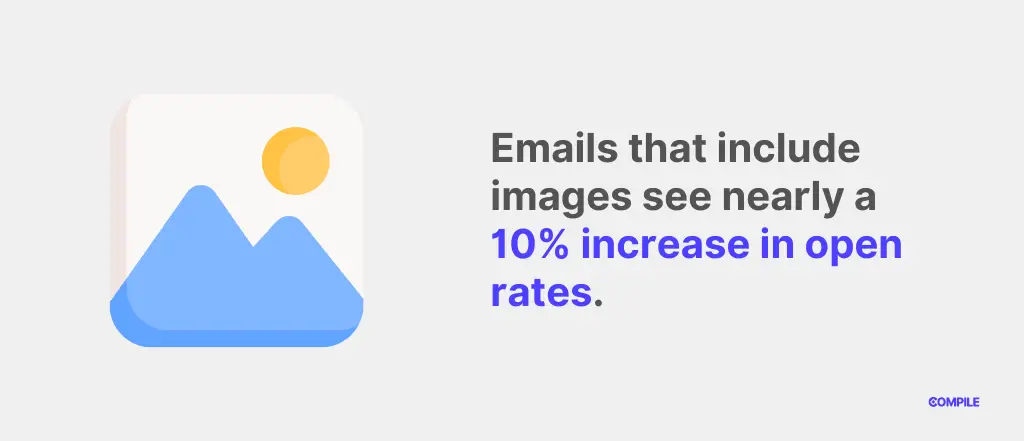
3.7x is the average click-through rate of welcome emails compared to regular email newsletters.
In the past year, a higher percentage of US B2C and B2B marketers raised their email marketing budgets compared to any other channel, with 62% increasing spending on email, which was more than the 62% who boosted social media budgets and the 50% who spent more on influencer marketing.
50% of people will delete an email if it’s not optimized for mobile, so email marketing campaigns that aren’t mobile-friendly will waste all the hard work put into them.
A survey of CEOs and marketers shows that 58.3% believe AI can improve email newsletters.
Marketers who segment email lists can boost email marketing revenue by 760%.
69% of people check email while watching TV, 57% do it in bed, and 79% check email on vacation.
57% of marketers plan to use mobile-friendly design in their email campaigns, which is more than personalization (52%) and email marketing automation (48%).
Including the word “video” in an email subject line boosts open rates by 19%, increases click-through rates by 65%, and reduces unsubscribes by 26%.
69% of email recipients report spam based on the subject line alone.
50% higher open rates are seen with personalized subject lines.
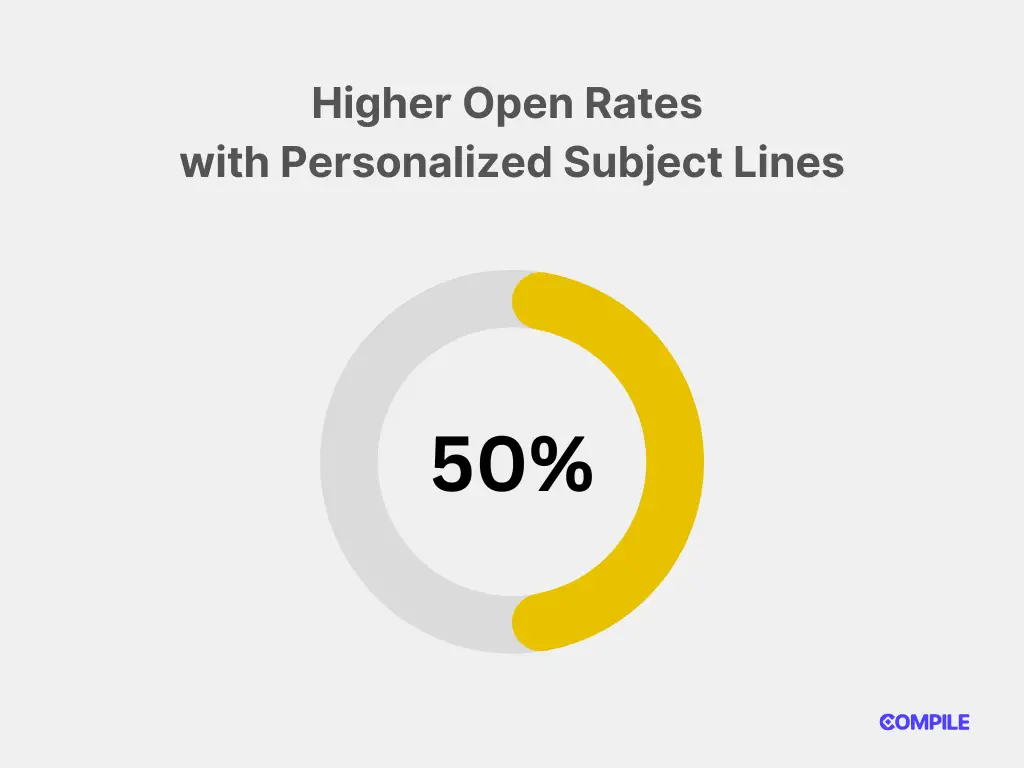
The top 3 AI use cases for email marketing are email retargeting at 55%, content personalization at 53%, and subject line optimization at 44%, among those who currently use this technology.
44% of marketers struggle to measure email performance and ROI.
39% of marketing professionals say they make new emails by changing the text and images in an existing email or template.
51% of US online shoppers favor email over other channels like in-app notifications, SMS, and push notifications for receiving discounts, based on eMarketer data.
More than half of all emails are opened on mobile devices.
$48 is the ROI for every dollar spent by organizations that always use A/B testing in their email marketing programs, compared to $35 for brands that do not use A/B testing.
80% of marketers personalize emails with profile data, while 64% personalize them by segment.
83% of US B2B marketers track content performance using email engagement, while 59% rely on email subscriber numbers.
Businesses that use email automation make 320% more money from their emails compared to those that don’t automate their emails, while also saving time.
15 emails a month are sent by marketers, on average.
Email automation is a must-have for businesses as it saves time and drives 320% more revenue than non-automated emails.
162.04 billion spam emails are sent every day.
On average, US marketers spend 12% of their advertising budget on email marketing.
347 billion emails are sent and received each day.
The use of AI in email marketing campaigns by marketers at companies with over 500 employees grew from 26% in 2022 to 57% in 2023, based on survey results.
35% of marketers use AI in their email marketing, and 33% plan to do so.
Nearly half of smartphone users favor email as the method for businesses to contact them.
35% of email production cycles face delays due to collecting feedback, while creating content (34%) and getting buy-in from all stakeholders (32%) also cause significant bottlenecks.
The two most commonly tracked metrics by marketers for their email campaigns are clickthrough rate at 34% and open rate at 31%.
54.53% of spam emails came from IPs in Russia, mainland China and the US.
Personalized emails drive conversions at a rate six times higher than generic emails.
$42 is generated for every $1 spent on A/B testing, while marketers who don’t use A/B testing generate only $21. Testing assumptions, focusing on what works, and eliminating what doesn’t is crucial.
64% of marketing professionals used subject line personalization in their email marketing campaigns.
46.9% of email sales come from automated emails triggered by user behavior, even though these emails make up just 2.6% of all emails sent.
The average open rate for all industries is 16.97%, meaning about 83% of users don’t open emails from businesses. This occurs when the wrong audience is targeted. Businesses should know their ideal customer profile (ICP) and remove uninterested users from their email list.
The majority of marketers, 62%, use dynamic content to customize their email marketing campaigns.
48% of consumers always or often delete or ignore brand emails without reading them.
Consumers who buy products through email offers spend 138% more money than those who don’t get these offers.
Around 5% of subject lines worldwide include emojis.

Email marketing is used by 64% of small businesses to reach customers.
43% of consumers like cart abandonment emails.
Email marketing is a top marketing tactic, with 36% of B2B professionals using it in their marketing efforts, slightly more than in-person events at 35% and paid social media at 35%.
Email subject lines containing numbers have open rates that are 57% higher.
55% of consumers said targeted promotions and discounts would make retailer emails more enjoyable.
The open rate for email subject lines containing the word “newsletter” is 18.7% lower.
53% of consumers like emails with birthday or anniversary mentions.
Conversion rates for email campaigns average 0.07%, but for cart abandonment emails, the rate jumps to 2.71%.
38% of brands are raising their email budget, while only 10% are reducing it.
On average, consumers spend 9 seconds reading emails from brands.
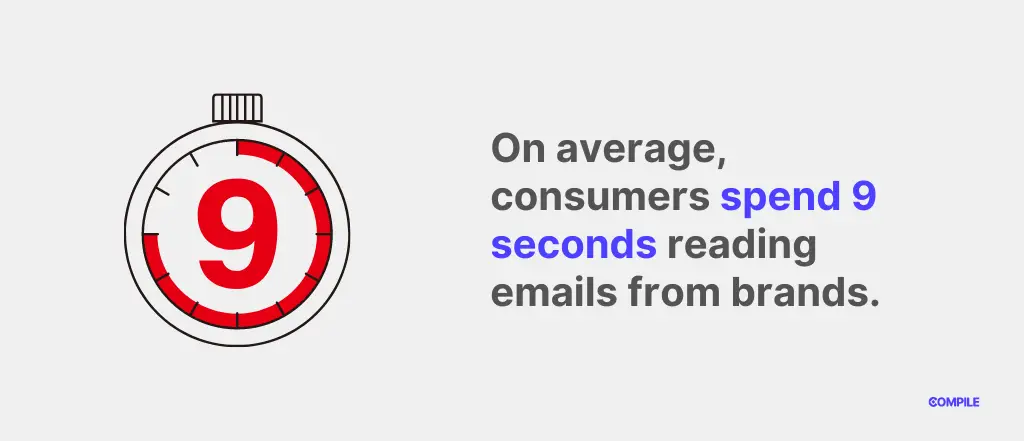
9 AM to 12 PM is the best time to send both B2C and B2B emails.
Over 40% of subscribers use Dark Mode on the Apple Mail app, yet 33% of email marketers state they aren’t coding specifically for Dark Mode.
22% higher ROI is reported by brands that frequently use dynamic content in their marketing emails, compared to those that rarely or never use it ($44 vs. $36 for each dollar spent).
32% of consumers don’t trust companies with their email when it comes to data security.
32% of B2B marketers ranked email marketing as the 2nd most effective channel for generating qualified leads, just behind in-person tradeshows and events at 33%.
The top 3 reasons people unsubscribe from email lists are too many emails (53.5%), repetitive or redundant emails (46.5%), and misaligned subject lines with content (30.4%).
An email marketing platform’s analysis of US merchants revealed a $72 ROI.
27% of US marketers surveyed said Tuesday is the best day to send a marketing email, with 19% choosing Monday.
An email marketing platform’s analysis of US merchants revealed a $72 ROI.
$40 is the average ROI for every dollar spent on email by US brands, while EU brands get $43.
Half of marketing professionals worldwide rated the perceived effectiveness of spending on email as “extremely/very effective”, more than the 48% for native advertising or the 45% for podcasts.
71.1% of marketers keep their email subject lines to 60 characters or less.
Conclusion
We hope you enjoyed this list of email marketing statistics.
We have also compiled the list of following statistics that might be useful for you to explore:
We frequently regularly update this list of statistics. Don’t hesitate to revisit this page later to find the latest data points.
Now I’d like to hear from you:
Which stat from this list surprised you the most? Or have a question?
Either way, please jump in and leave a comment below.
Leave a Reply